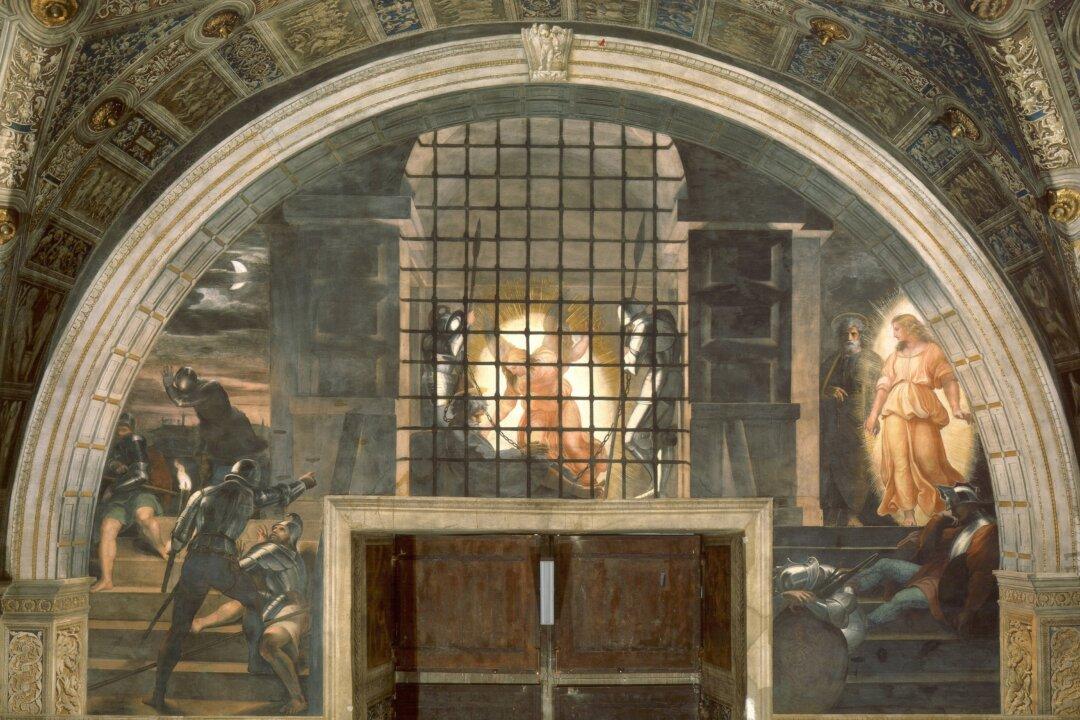The Renaissance painter Raphael Sanzio was born on April 6, 1483; he would die on his birthday, April 6, 1520. In 37 short years, Raphael created some of the greatest paintings known to the Western world. Approximately 500 years after his death, we celebrate and interpret one of his great paintings.
Divine Guidance to True Freedom: The ‘Liberation of Saint Peter’
Reaching Within: What traditional art offers the heart

Raphael's fresco the “Liberation of Saint Peter,” 1514. Vatican Museums, Vatican City. Public Domain
|Updated:




